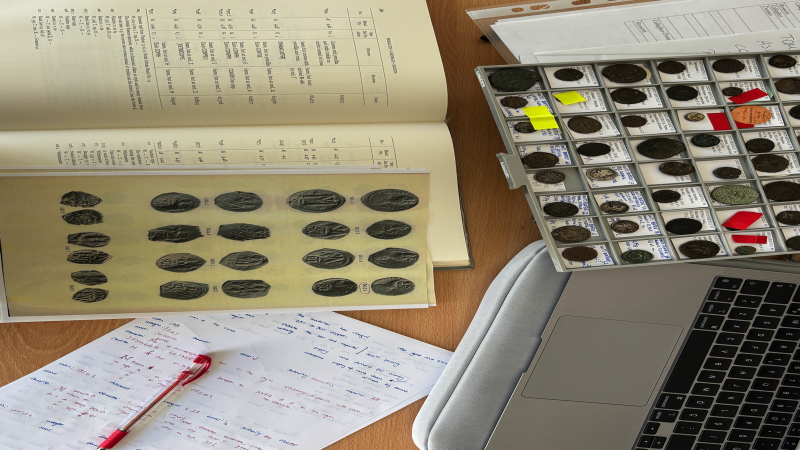

I had the incredible opportunity and privilege of attending a numismatics workshop at the University of Trieste, led by Prof. Bruno Callegher, and supported by the esteemed members of the Nomismata project. Over the past few days, this experience has been a profound learning journey.
Upon arrival, my friend İrem and I were warmly welcomed by our instructors. Prof. Callegher started the workshop with a simple yet powerful statement: “Numismatics cannot be learned without physically touching the coins.” At the time, I didn’t fully grasp the depth of his words, but as the workshop unfolded, it became clear that this principle was the foundation of the entire course.
As a young aspiring archaeologist, I thought I had encountered coins before, having worked on different projects and finding them in various excavations. However, these ten days truly opened my eyes to the fact that I knew very little about them. I realized that, for an untrained eye, coins and seals are merely engraved metals. They only reveal their secrets to those who know how to look and understand them.
We began by physically handling and measuring coins made from various materials – gold, silver, and bronze (not copper, as I learned the hard way from Prof. Callegher’s detailed lecture on why that distinction is important. Trust me, it’s important). As we explored the chronology of Byzantine emperors, Prof. Callegher ensured that we had the opportunity to hold every coin in the Trieste University rich collection, allowing us to become more familiar with them through tactile experience. The theoretical part of our classes was equally enriching. Prof. Andrea Gariboldi captivated me with his ability to link historical monetary politics to our present day, showing the deep connections between the two across multiple levels. After each class, I had the privilege of continuing the conversation with Prof. Callegher during our daily road trips from Trieste to Venice. Those moments of dialogue, often filled with humor and reflection, became a cherished part of the experience, including our inside jokes about my sleepiness in the early mornings.
Our lessons were further enriched by Giorgio Donato, the mastermind behind the Nomismata software and website. He taught us how to use the system, avoid mistakes, and even visualize new data. His discussions on AI and its potential applications in numismatics were especially intriguing. We also had the chance to learn about seals from Cristiano Rosetti, a true enthusiast with a diverse skillset in ancient languages, inscriptions, iconography, and metal science—skills essential for understanding both seals and numismatics. Although I couldn’t attend the classes by Kateyrna Sorochan and Giulio Carraro, they kindly sent me related materials and even invited me to join online.
Lastly, another key contributor to the Nomismata Project and my supervisor, Prof. Luca Zavagno, was always there to lend a helping hand and brighten our days with his jokes, as he so often does. His support, both academically and personally, made this experience even more memorable.
As someone with an untrained eye, I want to express my deep gratitude to all of these experts for helping me develop a lens through which I can now see coins clearly. I no longer just see them as objects; I can hear their stories and understand the complex systems that they represent.
This workshop has transformed my understanding of numismatics, and I am excited to continue exploring this fascinating field.
Zehra Demirci